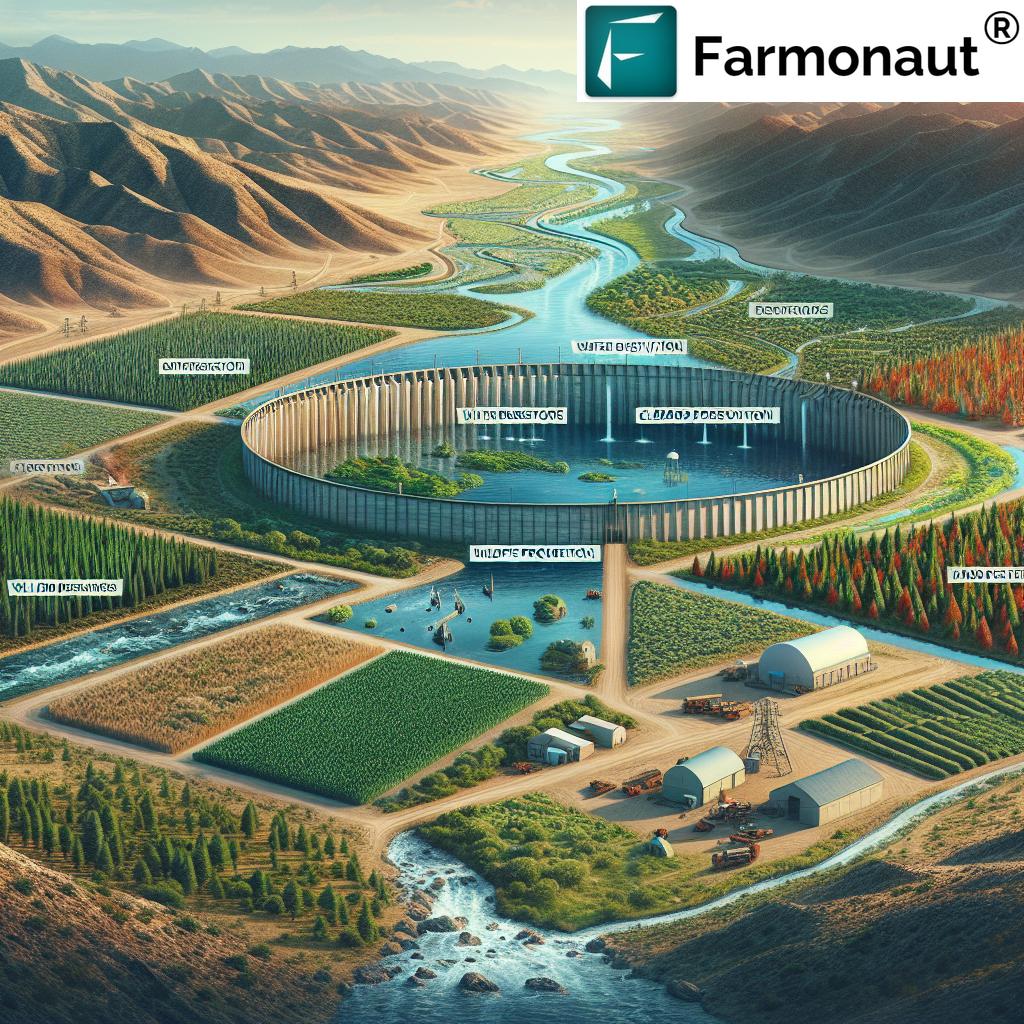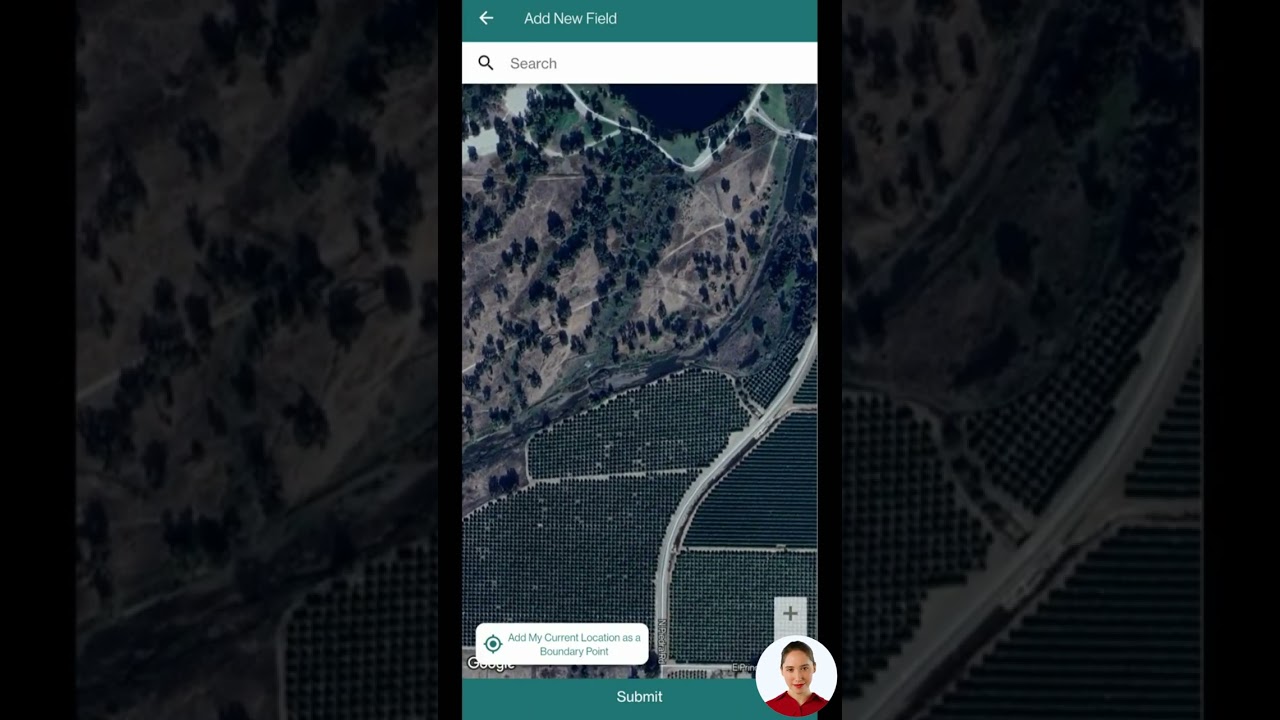Table of Contents
- Introduction
- Mining in Nevada: An Overview
- Nevada Agriculture Sector: Structure and Impacts
- Nevada Forestry Management: Practices and Programs
- Interconnections Between Mining, Agriculture, and Forestry
- Mining Scales Nevada: 7 Key Effects on Agriculture
- Comparative Impact Table
- Farmonaut and Sustainable Agriculture in Nevada
- FAQ: Mining, Agriculture & Forestry in Nevada
- Conclusion
“Nevada mining operations impact over 1.2 million acres, directly influencing agricultural land use and water availability statewide.”
Mining Scales Nevada: 7 Key Effects on Agriculture
Focus Keyword: Mining in Nevada
Nevada’s economic vitality stands on three dynamic pillars: mining, agriculture, and forestry. Each sector not only shapes the state’s sustainable land use but also profoundly influences resource management, wildfire prevention practices, and economic resilience. Nevada is the nation’s leading gold producer, boasts vast rangelands supporting significant cattle and hay production, and undertakes innovative forestry management to mitigate wildfire risks. However, as we strive for sustainable development, understanding the interplay between mining, agriculture, and forestry is crucial—not only to recognize the challenges but to seize opportunities for a balanced, thriving ecosystem within the state.
Mining in Nevada: An Overview
Nevada is internationally recognized for its mineral deposits, particularly gold and silver. Mining in Nevada is an economic powerhouse, with the state providing jobs, contributing to GDP, and serving as a critical node in the nation’s precious metals, salt, borax, sulfur, soda, potash, granite, marble, limestone, sandstone, and slate supply chain. The Bureau of Land Management (BLM) plays a central role, overseeing more than 180,000 active mining claims—an astounding 49% of all BLM claims nationwide. This vibrant mining presence not only bolsters employment and local economies but also interacts with land and water resources, agricultural production, and conservation efforts across Nevada.
- Gold & Silver Extraction: Nevada is the leading U.S. state in gold production, directly impacting local and national markets.
- Other Valuable Minerals: Deposits of salt, borax, sulfur, soda, potash, granite, marble, limestone, sandstone, and slate further enrich Nevada’s industrial resources.
- Land Oversight: The BLM’s management ensures compliance and environmental stewardship, but also triggers competition for limited resources among industries.
- Employment & Infrastructure: Mining activities create substantial employment opportunities and drive the development and maintenance of state infrastructure.
Nevada Agriculture Sector: Structure and Impacts
Nevada agriculture sector thrives despite the state’s arid climate and water resource limitations. Agriculture here mainly revolves around large-scale ranching and crop cultivation, both of which have evolved alongside local climate, resources, and market trends. According to the 2024 Census of Agriculture:
- Farm Size in Nevada: The state ranks third nationally in average farm size, with an impressive 3,500 acres per farm.
- Primary Enterprises: Range livestock production leads, predominated by cow-calf operations, alongside a strong presence of dairy, sheep, lamb, and hogs.
- Main Crops: Alfalfa hay dominates as the leading cash crop, with additional crops including potatoes, barley, wheat, corn, oats, onions, garlic, and honey.
- Market Value: With 3,122 farms, nearly $960 million in agricultural products are sold annually, and 5.9 million acres are dedicated to farmland.
These figures illustrate not only Nevada’s agricultural resilience but also the importance of sustainable land use in Nevada—especially in the face of expanding mining activities and persistent resource challenges like water scarcity.
Key Features of Nevada Agriculture
- Adaptation: Innovative water management and drought-resistant crops optimize yields in an arid climate.
- Export Markets: Substantial hay production supports regional dairy markets and international export, reinforcing the agricultural sector’s economic interconnectedness.
- Sustainable Practices: Farmers must continually adapt practices to mitigate resource competition with mining and forestry, ensuring productivity and environmental stewardship.
Nevada Forestry Management: Practices and Programs
Nevada forestry management addresses not only timber production and conservation, but also ecosystem health and wildfire prevention. Under the oversight of the Nevada Division of Forestry, the state’s forests are managed for sustainable resource use, maintenance of biodiversity, and risk mitigation.
- Wildfire Prevention Practices: Fuel reduction, forest thinning, and prescribed burns aim to minimize catastrophic wildfires that threaten agricultural land, grazing areas, and mining infrastructure.
- Biomass Utilization Nevada: Innovative programs transform tree and shrub biomass—often removed for fire prevention—into valuable products like mulch, animal bedding, wood chips, saw logs, biochar, and wood pellets.
- Sustainable Land Restoration: Forestry management supports not only forest health but also aids agricultural sectors by improving watershed stability and soil quality.
Biomass Utilization & Its Benefits
- Resource Cycle: Forestry waste becomes input for local industries—including mining—fostering regional self-sufficiency.
- Economic Boost: Biomass processing creates new jobs and supplements local economies.
- Environmental Impact: Utilization helps minimize waste and reduces fire hazards by removing excess organic material.
“Forestry management in Nevada reduces wildfire risk by up to 40%, safeguarding both agricultural and mining interests.”
Interconnections Between Mining, Agriculture, and Forestry in Nevada
The interactions among mining in Nevada, agriculture, and forestry management are complex and multifaceted. Sustainable development depends on understanding these relationships, as they affect land allocation, water resources in Nevada, and long-term environmental restoration.
1. Resource Utilization
- Mining operations rely on timber for construction and support; historically, this increased demand led to intensive logging and forest depletion.
- Agriculture and forestry, in turn, benefit from mining by using extracted materials—sand, gravel, minerals—in infrastructure, irrigation, and fertilizer blends.
2. Economic Synergy
- The growth of mining communities directly stimulates market demand for agricultural products and wood-based forestry products.
- Cross-sector employment opportunities strengthen Nevada’s economic resilience and foster wider support for sustainable rural development.
3. Environmental Management
- Both mining and forestry can trigger habitat disruption and require stringent regulations to mitigate ecosystem impacts.
- Best practices in bureaus’ environmental oversight and forestry programs lead to improved land reclamation and water quality for all sectors.
4. Land Use and Policy
- BLM’s regulatory framework addresses land reclamation, restoration, and multi-sector balancing, striving for sustainable land use Nevada-wide.
- State legislation supports timber conversion guidelines—protecting forests while enabling necessary land allocation for mining and agriculture expansion.
Recent Challenges & Opportunities
- Water Resources in Nevada: With mining operations, agriculture, and forestry all competing for limited water, state-level policy and innovative technologies are required to ensure resource allocation and conservation.
- Environmental Impacts of Mining: From soil and water contamination to landscape alteration, mining’s footprint is significant, calling for stronger restoration mandates and cross-sector planning.
- Biomass Utilization Nevada & Economic Diversification: New biomass markets and research collaborations can diversify local economies and create sustainable feedback loops between sectors.
Mining Scales Nevada: 7 Key Effects on Agriculture
The intersection of mining and agriculture is dynamic—sometimes synergistic, often competitive. Here, we explore the seven primary ways that contemporary mining in Nevada impacts the state’s agricultural sector:
-
1. Water Resource Competition
Water is the lifeblood of both agricultural production and mining operations. In Nevada’s arid climate, every drop counts. Mining uses substantial water for mineral extraction and processing (e.g., cyanide leaching in gold mining), often drawing from shared aquifers or diverting surface water. This direct competition can reduce irrigation availability for crops and rangeland, impact livestock watering, and exacerbate regional water scarcity.
- Mitigation: Adoption of efficient irrigation technologies in agriculture, stricter water recycling mandates in mining, and integrated basin management help ensure equitable distribution.
-
2. Land Use Conflicts and Reclamation
Nevada mining operations impact more than 1.2 million acres, directly influencing agricultural land allocation and open range. Expansion of mining claims—often managed by the BLM—can restrict the availability of arable land, fragment habitat, and reduce grazing areas. However, post-mining land reclamation requirements may create opportunities for restoring formerly degraded landscapes to agricultural or rangeland use.
- Mitigation: Active collaboration between regulatory agencies, mining companies, and farmers ensures post-extraction land restoration, transforming lands for agricultural or ecological benefit.
-
3. Soil Quality Degradation
Large-scale mining disturbs soil profiles, sometimes leading to erosion, compaction, or contamination by heavy metals and chemicals. These soil changes can reduce organic matter content, impair crop production, and necessitate long-term remediation. In some agricultural regions, dust and sediment from nearby mining operations also reduce soil fertility.
- Mitigation: Improved dust control, use of carbon footprinting tools for impact assessment, and strict soil reclamation regulations are vital to preserving agricultural productivity.
-
4. Habitat Fragmentation and Biodiversity Loss
Mining infrastructure, such as roads and open pits, fragments landscapes and wildlife habitat, threatening biodiversity. For agriculture, this impacts ecosystem services—like pollination and pest control—directly affecting crop yields and livestock health.
- Mitigation: Implementation of forest advisory and ecological monitoring helps minimize habitat disruptions and supports restoration.
-
5. Infrastructure Development and Local Economies
Mining drives the development of roads, energy grids, and service infrastructure. While this sometimes enhances market access for agricultural producers, it can also increase competition for resources and disrupt existing supply chains.
- Potential Benefit: Shared infrastructure can reduce transportation costs, improve distribution efficiency, and foster economic growth if well-coordinated.
-
6. Water Quality and Environmental Health
Environmental impacts of mining include possible contamination of water bodies by tailings, leachates, and chemical spills. Agricultural sectors downstream must manage associated risks to irrigation systems, crop safety, and livestock health.
- Mitigation: Advanced water monitoring, phytoremediation, and real-time environmental intelligence, such as traceability systems, help maintain water quality and supply chain safety.
-
7. Wildfire Risk and Forestry Interactions
Open landscapes and disturbed soils near mining operations can alter wildfire regimes, increasing vulnerability for agricultural and forestry land. The role of wildfire prevention practices—from prescribed burns to biomass harvesting—has gained prominence in state management strategies.
- Best Practice: Integration of mining restoration with Nevada forestry management, including regular fuel reduction and landscape monitoring, helps mitigate wildfire risk for all sectors involved.
Comparative Impact Table: Mining Activities & Sectoral Effects in Nevada
| Sector | Key Resource | Estimated Impact from Mining | Effect on Sustainable Land Use | Role in Wildfire Prevention |
|---|---|---|---|---|
| Agriculture | Water | -25% irrigation water availability | Reduces arable land; challenges reclamation | Indirect (via landscape change) |
| Agriculture | Soil | Up to 15% increased contamination risk | Necessitates advanced remediation, traceability | Minimal unless linked to erosion/fuel buildup |
| Forestry | Vegetation/Wood | Resource demand for mining construction rises by 20% | Logging increases, must be balanced for forest health | Biomass removal reduces wildfire risk by ~40% |
| Forestry | Biomass | Boosted utilization; job creation | Enhanced by forestry-agriculture cooperation | Critical application for ecosystem management |
| Both Sectors | Land | Mining impacts 1.2m+ acres (direct/indirect) | Requires coordinated reclamation, zoning | Shared responsibility for fuel/vegetation management |
Farmonaut and Sustainable Agriculture in Nevada
As Nevada navigates the intersection of mining, agriculture, and forestry, embracing innovative technology is key. At Farmonaut, we offer advanced, satellite-based farm management solutions using real-time imagery, AI, and data analytics to empower farmers, agribusinesses, and broader stakeholders.
-
Real-time Crop Health Monitoring:
Our satellite tools deliver vegetation health data (NDVI), soil moisture status, and automated alerting—enabling Nevada’s farmers to respond quickly to stress, optimize water use, and plan for external impacts from mining or forestry operations. -
Resource Management & Precision Agriculture:
We help users make the most out of scarce water resources and land—boosting productivity while supporting sustainability via carbon footprint tracking. This is crucial for aligning agricultural practices with Nevada’s environmental regulations. -
Blockchain-Based Traceability:
With traceability tools, Nevada producers can assure food safety and maintain transparent product journeys, reducing market risks linked to mining-related contamination. -
Fleet and Resource Tracking:
Our fleet management system optimizes logistics for large farms, improving overall efficiency and minimizing operational costs, even as infrastructure evolves. -
AI-Driven Advisory:
Personalized, real-time advice from Jeevn AI means better decisions for farmers, ranchers, and land managers when facing shifting climate, water, or policy landscapes. -
Financing Access and Verification:
Satellite-based verification for crop insurance and loans supports rural financial access—critical as farm size in Nevada continues to grow. -
Scalability:
Serving everything from smallholder operations to large-scale farm management enterprises, our solutions ensure affordable, precision farm oversight across the state.
For technology integration in forestry management and advisory, explore our crop, plantation, and forest advisory app.
API Access: For developers and researchers interested in integrating mining in Nevada and agriculture monitoring, our satellite API and developer documentation open powerful data sources for custom applications in sustainable land use Nevada.
FAQ: Mining, Agriculture & Forestry in Nevada
How does mining in Nevada impact water resources in the state?
Mining requires significant water for mineral extraction and ore processing, which can compete with agricultural irrigation needs. This is especially critical in Nevada’s arid regions, where efficient water management and regulatory coordination are essential to minimize scarcity and ensure all sector needs are met.
How are forests managed in Nevada for wildfire prevention?
Nevada forestry management emphasizes fuel reduction, biomass removal, and prescribed burns to reduce wildfire risks—safeguarding both agricultural and mining interests. Biomass from these programs is utilized for products such as mulch and wood pellets, further supporting economic and environmental goals.
What is the role of the BLM in overseeing mining operations?
The Bureau of Land Management (BLM) manages more than 180,000 active mining claims in Nevada, ensuring sustainable land use, enforcing regulations on reclamation and restoration, and balancing multi-sector land allocation.
Can mining-affected land be restored for agricultural use?
Yes. Land reclamation following mining is regulated by state and federal guidelines to ensure restoration for agriculture, rangeland, or natural habitat. Reclaimed land can contribute to sustainable land use Nevada-wide, provided best practices are followed.
How does Farmonaut support Nevada’s agriculture and forestry sectors?
Farmonaut provides real-time crop health monitoring, resource management, blockchain-based traceability, and advisory systems powered by satellite imagery and AI. These affordable and accessible technologies help farmers and land managers make data-driven decisions, optimize resources, and build resilience against external pressures such as mining and climate change.
Conclusion
Mining in Nevada, agriculture, and forestry collectively define the state’s economic trajectory, environmental integrity, and sustainable future. The intricate relationships among these sectors highlight not only the challenges of water resource competition, land use conflicts, and environmental management, but also opportunities for sectoral synergy and sustainable development. Through targeted policies, technology adoption, and responsible stewardship, Nevada can continue to lead in mineral production while strengthening the resilience and sustainability of its agricultural and forestry landscapes.
Advances in remote monitoring, AI, and data analytics—like those provided by Farmonaut—will remain pivotal as the state balances growth with conservation, ensuring its industries remain robust, sustainable, and globally competitive.






















